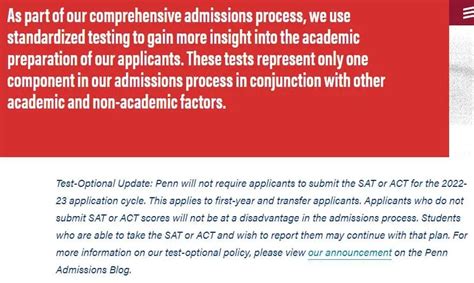UPenn Admissions Podcast: Exploring the Impact of Test-Optional Policies

The University of Pennsylvania has been at the forefront of the test-optional movement in higher education. In this podcast, we explore the impact of test-optional policies on admissions and student success, featuring the perspectives of Penn Admissions officers, students, and faculty.
The Test-Optional Landscape
In recent years, a growing number of colleges and universities have adopted test-optional policies, allowing students to apply without submitting standardized test scores. According to the National Center for Fair & Equitable Testing, nearly 1,800 institutions are now test-optional, up from just over 100 in 2018.
Why Go Test-Optional?
There are several reasons why institutions choose to adopt test-optional policies:
- Equity: Standardized tests have been shown to have biases that favor students from wealthy and advantaged backgrounds.
- Access: Test-optional policies can increase access to higher education for students who face barriers to testing, such as financial hardship or disabilities.
- Holistic Review: Test-optional policies allow admissions officers to consider a broader range of factors in the admissions process, such as academic rigor, extracurricular activities, and personal qualities.
Penn’s Experience with Test-Optional
Penn implemented a test-optional policy for the 2020-21 admissions cycle. Since then, the university has seen:
- Increased Applications: Applications for the 2020-21 cycle increased by over 20%, suggesting that test-optional policies can attract a wider pool of applicants.
- Diversified Student Body: The percentage of Black and Hispanic students admitted to the Class of 2025 increased significantly, indicating that test-optional policies can promote equity in admissions.
- Academic Success: Test-optional students have performed comparably to test-taking students in terms of academic performance and graduation rates.
Test-Optional Admissions and Student Success
Does Test-Optional Matter for Student Success?
Research suggests that test-optional policies do not have a negative impact on student success. In a study by the University of California, Berkeley, test-optional students performed similarly to test-taking students in terms of grades, retention, and graduation rates.
Benefits of Test-Optional for Students
- Reduces Stress: Test-optional policies can alleviate the stress and anxiety associated with standardized testing.
- Promotes Equity: Test-optional policies can help level the playing field for students from disadvantaged backgrounds.
- Allows for Holistic Review: Test-optional policies allow admissions officers to consider a more comprehensive view of students’ abilities and potential.
Common Mistakes to Avoid with Test-Optional Applications
- Assuming You Don’t Need to Submit Strong Academic Credentials: Test-optional does not mean that admissions officers will not consider your academic performance. Submit transcripts, demonstrate academic rigor, and highlight your academic achievements.
- Neglecting Extracurricular Activities: Extracurricular activities are a key component of a holistic review. Engage in meaningful activities, demonstrate leadership, and pursue your passions.
- Overlooking Personal Qualities: Personal essays, letters of recommendation, and interviews are opportunities to showcase your character, values, and aspirations. Craft compelling narratives and articulate your unique qualities.
Conclusion
Test-optional policies are a significant shift in admissions practices. They have the potential to promote equity, access, and holistic review. However, it is important to approach test-optional applications strategically to ensure a competitive and successful application.
By understanding the benefits and addressing common mistakes, test-optional students can navigate the admissions process with confidence and maximize their chances of success.
